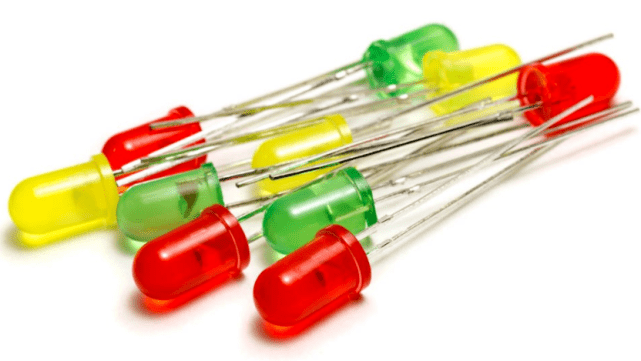A diode is an electronic device made from semiconducting materials (silicon, selenium, germanium, etc.). It has unidirectional conductivity, that is, when a forward voltage is applied to the anode and cathode of the diode, the diode passes through. The cut-off date of a diode when a reverse voltage is applied to the anode and cathode. Thus, the conduction and cutoff date of the diode corresponds to the connection and disconnection of the switch.
Diode is one of the earliest semiconductor devices, which is widely used. Especially in a variety of electronic circuits, diode and resistance, capacitance, inductance and other components of the reasonable connection, the formation of different functions of the circuit, can achieve AC rectification, modulation signal wave detection, limiting, power supply voltage stability and other functions. Diode traces can be found in ordinary radio circuits, other household appliances, or industrial control circuits.
Structure composition:
The diode is composed of PN combined with the corresponding electrode wire and shell packaging.
What is the P-N junction?
P-type and N-type semiconductors are made on the same semiconductor (usually silicon or germanium) substrate by semiconductor and N-type semiconductor by diffusion, forming a space charge region at their interface, called PN junction.

The electrode led out of the P zone is called the anode, and the electrode led out of the N zone is called the cathode. Due to the unidirectional conductivity of the PN junction, the on-time current direction of the diode flows from the anode through the pipe to the cathode.
The circuit symbol of the diode is shown in figure. A diode has two electrodes, a positive electrode, also known as an anode, drawn from the P region. The N region leads to a negative electrode, also known as the cathode. The direction of the triangle arrow represents the direction of the positive current, and the word symbol of the diode represents VD.
Working principle:
The main principle of the diode is to make use of the one-way conductivity of the PN junction, and add leads and packages to the PN junction to become a diode.
The crystal diode is a PN junction formed by p-type semiconductor and N-type semiconductor, which forms a space charge layer on both sides of the interface and establishes its own electric field. When there is no external voltage, the diffusion current due to the carrier concentration difference on both sides of PN junction is equal to the drift current caused by the self-built electric field.
When there is a positive external voltage bias, the mutual inhibition of the external electric field and the self-built electric field increases the diffusion current of the carrier, resulting in a positive current. When there is an external reverse voltage bias, the external electric field and the self-built electric field are further strengthened to form a reverse saturation current independent of the value of the reverse voltage bias.
Main categories:
1. Point contact diode.
The PN contact area of point contact diode is small, so it can not bear higher reverse voltage through larger forward current, but its high frequency performance is good, and it is suitable for high frequency detection circuit and switching circuit.
2. Surface contact diode.
PN contact area is large, can pass through a larger current or higher reverse voltage, suitable for rectifier circuit.
3. Planar diode.
When planar diode is used as switch tube in pulse digital circuit, the area of PN junction is larger during area ratio rectification.
4. Voltage regulator tube
Voltage regulator is a special surface contact semiconductor silicon diode, which has the function of voltage stabilization. The main difference between the regulator and the ordinary diode is that the regulator is the reverse penetration state of the PN junction. By limiting the size of the reverse current during the manufacturing process and during service time, it is ensured that the regulator tube will not be damaged by overheating in the reverse penetration state.
A regulator is different from a regulator. The reverse penetration of a regulator is reversible. The PN junction will not overheat and damage as long as it does not exceed the allowable value of the voltage regulator current. In addition to the reverse voltage, the regulator restores original performance, so the regulator has good repeated penetration characteristics.
Photodiode.
Photodiode, also known as photosensitive diode. It has a glass window in its shell that accepts light.
Light-emitting diodes.
Light-emitting diodes (leds) are semiconductor solid state displays that convert electrical energy directly into light, or leds. Similar to ordinary diodes, leds are also composed of PN structures. The LIGHT-emitting diode'S PN junction is packaged in a clear plastic case and comes in square, rectangular and circular shapes. Led has the advantages of low drive voltage, low working current, strong anti-vibration and impact ability, small size, high reliability, energy saving, long service life and so on. It is widely used in signal indicating circuit.
